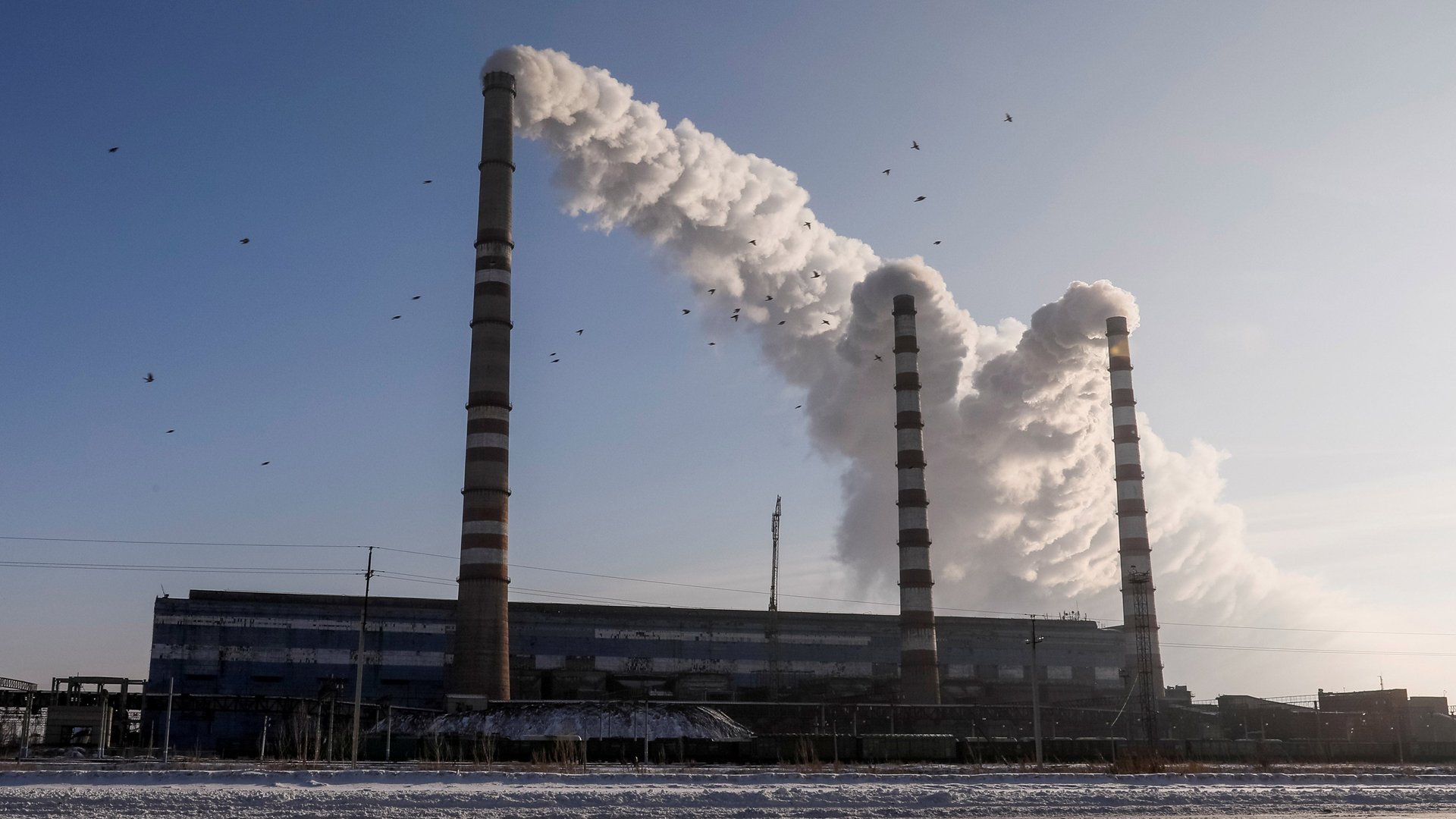Once on the sidelines, carbon capture is now being touted as an economic win
To fight climate change, the world needs to cut the amount of carbon dioxide dumped into the atmosphere—fast. One way to make a serious dent is carbon capture, a suite of technologies to trap carbon dioxide produced by industries and fossil-fuel power plants, and then either bury it underground or put it to some use.


To fight climate change, the world needs to cut the amount of carbon dioxide dumped into the atmosphere—fast. One way to make a serious dent is carbon capture, a suite of technologies to trap carbon dioxide produced by industries and fossil-fuel power plants, and then either bury it underground or put it to some use.
Though carbon capture has been in commercial use since the 1970s, cost has limited progress on deploying it more widely. “The carbon-capture community is a dispirited community,” Rich Powell, director of ClearPath, an organization that lobbies for clean energy, told Quartz this past February. There are currently 17 large-scale plants in the world, mostly in the US, that put away about 40 million metric tons of carbon dioxide—roughly 1% of global annual emissions. (Quartz published an in-depth series on the technology in 2017.)
More recently, however, the mood has changed. As part of an omnibus budget bill signed in February, US president Donald Trump passed legislation to incentivize carbon capture through so-called 45Q tax credits. Those capturing and simply burying CO2 would receive $50 per metric ton, and those that put the greenhouse gas to some use would receive $35 per metric ton.
Capturing the potential
A broader economic case for carbon capture is also gaining strength. A new report from ClearPath and the Carbon Utilization Research Council (CURC) suggests that if the US government continues to deploy the right policies, markets will drive the growth of carbon capture. Titled “Making Carbon a Commodity,” the report estimates that accelerated research, development, and deployment of the technology could add $190 billion to US annual GDP by 2040, and add 780,000 jobs over the same period.
The report’s rosiest projections show the gains that can be achieved by deploying carbon capture on power plants with a capacity of 87 GW (gigawatts)—enough to power 8.7 million homes. The economic incentive to do that would come from increased oil recovery of up to 900 million barrels per year, via a process that involves injecting carbon dioxide in an aging oil field. Because carbon dioxide mixes with oil, it boosts the production of oil while storing away much of the carbon dioxide in the process.
As a conservative estimate, the report predicts an economic boost of $70 billion to US annual GDP by 2040, as well as 270,000 new jobs, 17 GW of fossil-fuel power plants with carbon capture (enough to power 1.7 million homes), and 100 million barrels additional of oil recovered each year. It’s notable the report mentions “climate change” only once and does not include the economic benefits that can be derived from avoided emissions through the use of carbon capture.
To achieve many of these gains, the report recommends creating public-private partnerships to develop and scale up early-stage technologies. This is important to overcome one of the crucial challenges of carbon capture: large capital investment. Carbon capture is only economical if done at large scale, squirreling away roughly 1 million metric tons of carbon dioxide per year or more at each installation. ClearPath and CURC say that the US Department of Energy’s (DOE) funding can play a crucial role in making such partnerships work. It was DOE funding that helped build Petra Nova in Texas—the first and only carbon-capture unit in the US that is installed on a coal-fired power plant.
The report also recommends streamlining some regulations and rolling back others. If carbon-capture deployment is to work, for example, states will have to build new or extend already existing pipelines to transport carbon dioxide from where it is captured to where it may be buried or used. These pipelines require bureaucratic permitting processes, which add cost and delays to carbon-capture projects. Controversially, the report also recommends that the US Environmental Protection Agency relax reporting requirements on how much carbon dioxide is buried by enhanced oil-recovery projects. Along with the report, CURC and the Electric Power Research Institute have published a roadmap to work through the development of early-stage technologies.
Too rosy?
ClearPath and CURC rely on modeling efforts to project costs and benefits of carbon capture. The analysts used projections from the US Energy Information Administration (EIA) to draw their conclusions. According to the EIA, coal and natural gas will provide 56% of the country’s electricity in 2040 (versus 62% in 2017), with little to no dip in demand for oil. On the flip side, Bloomberg New Energy Finance estimates there will be no coal left in the mix and renewables will contribute 55% of US electricity by 2050. It expects oil demand to fall steeply.
Energy experts widely agree that, given the pace of change in the industry, few if any models will be proven correct all the way out to 2040. But, as a famous statistician once said: “All models are wrong, but some are useful.” The report is the first to lay down the case for the long-term economic potential of an emissions-cutting technology that scientists believe is crucial to hit climate goal. Its critics can use the report’s assumptions to build their own models.
After years of struggling, carbon capture may finally have the favorable policies needed to scale up. But it’s too early to say if those policies are enough of an incentive. Six months since the 45Q tax credits were approved, there has been only one carbon-capture project announced. To reap all the benefits, the carbon-capture community needs to do a lot more.